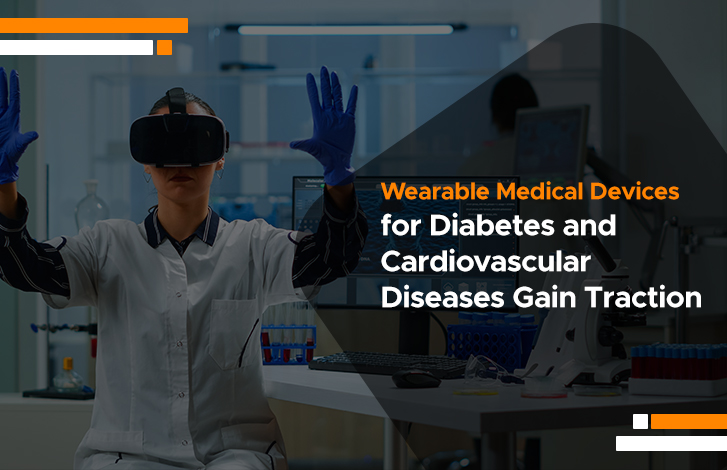The healthcare industry has seen a surge in adopting wearable medical devices to improve patient outcomes and enhance patient experience. These devices have proven to be effective in managing diabetes and cardiovascular diseases, which are two of the most prevalent non-communicable diseases globally. This article will discuss the benefits of wearable medical devices, their applications in diabetes and cardiovascular disease management, and the latest advancements in this field.
Introduction to Wearable Medical Devices
Wearable medical devices are non-invasive, portable devices designed to monitor, diagnose, and treat various medical conditions. They are often worn on the body or attached to clothing and can provide real-time data to healthcare providers, patients, and caregivers. These devices have gained traction due to their ability to provide continuous health monitoring, personalized medicine, and remote patient care.
Advantages of Wearable Medical Devices
- Continuous Monitoring: Wearable devices enable continuous monitoring of vital signs, physical activity, and other health parameters, providing valuable insights into a patient’s condition.
- Early Detection and Intervention: Continuous monitoring allows for early detection of potential health issues and timely intervention, potentially preventing the progression of diseases.
- Improved Patient Engagement: Wearable devices empower patients to actively participate in their healthcare by providing real-time feedback on their health status.
- Remote Patient Monitoring: These devices enable healthcare providers to monitor patients remotely, reducing the need for hospital visits and improving overall healthcare delivery.
Wearable Devices in Diabetes Management
Diabetes is a chronic condition characterized by high blood sugar levels. Effective management of diabetes requires continuous monitoring of blood glucose levels, which can be achieved using wearable medical devices.
1. Continuous Glucose Monitoring (CGM) Systems
Continuous Glucose Monitoring (CGM) systems are wearable devices that measure blood glucose levels in real-time. They consist of a sensor inserted under the skin and a transmitter that sends the glucose data to a display device, such as a smartphone or dedicated CGM receiver. CGM systems have been shown to improve glycemic control in both type 1 and type 2 diabetes patients by providing real-time feedback on blood glucose levels and trends.
2. Insulin Pumps
Insulin pumps are wearable medical devices that deliver a continuous supply of insulin to patients with diabetes, helping them maintain stable blood glucose levels. These devices consist of an insulin reservoir and a pumping mechanism that delivers insulin through an infusion set connected to the patient’s body. Insulin pumps can be programmed to deliver different amounts of insulin at different times of the day, allowing for personalized insulin therapy.
Wearable Devices in Cardiovascular Disease Management
CVDs, or cardiovascular diseases, are conditions that impact the heart and circulatory system. Managing CVD requires continuous monitoring of vital signs, such as blood pressure and heart rate, which can be achieved using wearable medical devices.
1. Wearable Blood Pressure Monitors
Wearable blood pressure monitors continuously measure blood pressure and transmit the data to a smartphone or other display device. These devices can help detect hypertension, a leading risk factor for CVDs, and enable timely intervention to prevent complications.
2. Wearable Electrocardiogram (ECG) Devices
Wearable ECG devices can record the heart’s electrical activity, providing valuable information on heart rate and rhythm. These devices can help detect arrhythmias: abnormal heart rhythms that can lead to serious complications, such as stroke and heart failure.
Growing Research and Development in Wearable Medical Devices
The increasing prevalence of diabetes and CVDs and the growing emphasis on health and well-being have fueled research and development efforts in the wearable medical devices industry. Companies constantly develop new technologies and devices to improve patient outcomes and enhance healthcare delivery.
1. Recent Advancements in CGM Systems
In March 2022, Dexcom received the CE Mark for its G7 CGM system, which is now authorized for use in European individuals with diabetes aged two years or older, including pregnant women. This new system offers improved sensor performance, durability, and mobile phone integration, making it more accessible to patients.
2. Innovations in Insulin Pumps and Sensors
Companies like Medtronic focus on developing advanced sensors and insulin pumps to improve diabetes management. In May 2021, Medtronic received European authorization for its Guardian 4 sensor, which can be used as a standalone glucose monitor or integrated into the company’s insulin pumps for real-time glucose monitoring and tracking.
3. Wearable ECG Devices for Cardiologists
Wearable ECG devices have become more sophisticated and accessible, with many smartwatches now offering FDA-approved ECG monitoring features. Devices like the Apple Watch, Fitbit Sense, and Samsung Galaxy Watch3 have integrated ECG capabilities, allowing users to monitor their heart health and share data with their healthcare providers.
Conclusion
Wearable medical devices have the potential to revolutionize the management of diabetes and cardiovascular diseases by providing continuous health monitoring, personalized medicine, and remote patient care. As technology advances and more innovative devices are developed, we expect to see continued growth in adopting wearable medical devices to manage these chronic conditions.
By staying up-to-date with the latest advancements in wearable medical devices and incorporating them into their practice, healthcare providers can improve patient outcomes and enhance the overall patient experience. As wearable technology continues to evolve, patients and healthcare providers alike will benefit from the increased accessibility, convenience, and personalization that these devices offer.







